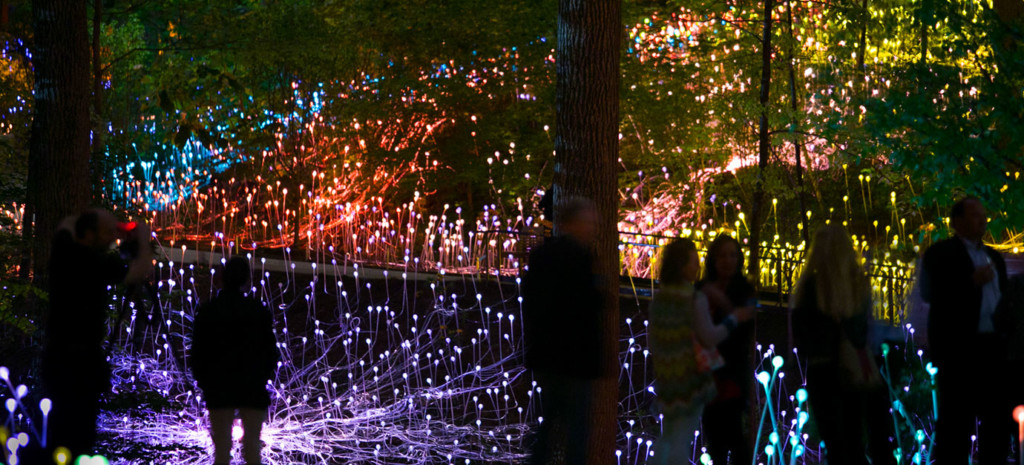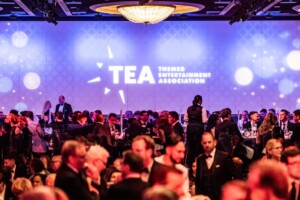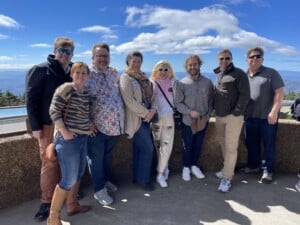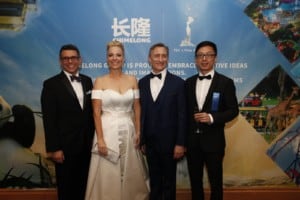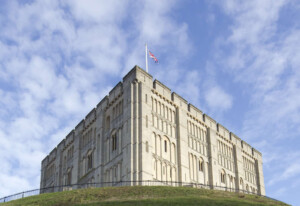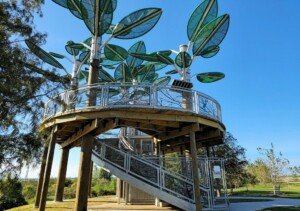Thousands of museum professionals from across the United States and around the world convened in Atlanta, 26th to 29th April for the 2015 American Alliance of Museums (AAM) Annual Meeting and MuseumExpo.
The theme for this year’s week of events was “The Social Value of Museums: Inspiring Change”. During this watershed moment in technological, social and racial history, the notion of museums as change agents has catapulted to the forefront of cultural consciousness.
By Clara Rice, Jack Rouse Associates
It thus seemed fitting to have a conference on change in a city that is considered the “cradle of the civil rights movement” and the home of Nobel Peace Prize laureates Martin Luther King, Jr. and former US President Jimmy Carter. The theme of transformation – as it related to everything from technology to audience engagement to diversity and inclusion – imbued the conference’s educational sessions, networking mixers, parties, panels and product demonstrations.
“The Fork in the Road”

The American Alliance of Museums Annual Meeting officially began with recognition of AAM’s own internal changes, as the Alliance bade a fond farewell to its outgoing president, Ford W. Bell. Bell visited over 506 museums during his 8-year tenure and spent much of his farewell speech lauding the oft-forgotten benefits museums provide to their communities, particularly in the field of education.
Over fifty-five million schoolchildren visit museums each year (a significant part of museums’ 850 million  total annual visits), and museums spend $2 billion per year on educational activities.
total annual visits), and museums spend $2 billion per year on educational activities.
“The work of museums in our country is essential and diverse, ” said Bell. “Who serves our communities better than museums?” He encouraged museum professionals to speak up to their boards, audiences, donors and governmental officials about the economic, educational and societal benefits of cultural organizations: “we have to do a better job of speaking in one voice…people don’t understand what our field is. No one person can move the needle. Together, we can move it a long way.”
Bell will be succeeded on June 1 by Laura Lott, the ninth president of the Alliance and the first female president since its founding. Lott has served as AAM’s Chief Operating Officer since 2010 and led a two-year campaign to eliminate seven years of the organization’s operating deficits. During her tenure as president, Lott plans to expand the Alliance’s Center for the Future of Museums initiative as well as its international collaborations. Meanwhile, the Alliance has announced the Ford W. Bell Fellowship for Museums and K-12 Education in honor of its retiring leader.

Dr. Johnetta Betsch Cole said diversifying staff starts with diversifying audience: “you can’t lead where you won’t go.”
Following the tribute to Bell, the General Meeting took a rousing, inspirational turn as Dr. Johnetta Betsch Cole took the stage and brought down the house. Dr. Cole is the Director of the Smithsonian National Museum of African Art and the President Emerita of Spelman College and the Bennett College for Women. She has received 67 honorary degrees and numerous awards, and after two sentences of her keynote speech, the entire audience knew why.
She began by greeting the crowd as “brothers and sisters, all” and joyfully exclaimed, “it’s a GET UP kinda morning!” She jumped on the theme of the conference, saying “our museums can and must be of social value, ” before emphasizing that cultural institutions need to be more inclusive in the people they hire, the people they serve, and the ideas and programming that they generate. Diversity, she explained, “is beyond EEO [Equal Employment Opportunity]…sustaining a diverse workforce is the right thing to do.” Throughout her speech, she backed up her philosophy with facts:
- “35% of all Americans are minorities, and this percentage is going up, not down. In the next 50 years, the US will become a majority minority, and public policy will be more reflective of minority communities.”
- Only 20% of art museum staff are people of color.
- Of the 220 art museums in the US, less than 5% have minorities in senior positions.
- Among the members of the Association of Art Museum Directors, 50% of directors are women but only five directors are African American women.
- “Less than 3% of all modern artists at the Met are women, but 87% of the nudes at the Met are women.”
Cole’s notes on diversity extended beyond race and gender. “We need to make sure that everyone from the LGBTQ community feels included, ” she added. She also stressed the need for greater inclusion of differently abled people and younger visitors. “How are we engaging the young’uns, ” she asked. “Unless museums speak to the interests of millennials, when those now middle-aged people ‘give it up to glory’, attendance will dwindle.”
In closing, she framed this pivotal point in our history not just as a time of change, but as a time of choice: “When we pause to reflect on diversity, we are at a fork in the road. We can take the fork that continues to reflect the histories of just some of the many people that represent this nation, or the other fork that requires inspiration and creating change.”

Tracking Trends
With change comes trends, and one of the highlights of the American Alliance of Museums conference week was the Center for the Future of Museums’ annual recap of its 2015 Trendswatch report. The Center for the Future of Museums, an initiative of AAM, explores technological, social and economic trends to better prepare museums for the challenges and opportunities of the future.
Their Trendswatch report is the curation of a year’s worth of CFM’s “Dispatches from the Future” weekly newsletters. This year’s report identified six trends: the Open Economy, Ethical Consumerism, Personalization, Climate Change, Wearable Technology and “Slooow (the ‘De-Stressed’ Trend)”. As CFM Founder and Director, Elizabeth Merritt explained in her “Annual Glimpse of the Future” presentation, the main takeaways of the past twelve months were:
- People want information, and they want it now, be it on their phones, wrists or eyeglasses.
- Millennials in particular are concerned about the social implications of their purchases and the ethical norms of the companies that create the products they consume.
- Despite the debates in Washington, we ignore the consequences of global climate change at our own peril.
- As much as technology prompts us to speed ahead, there is a “counter-sprint” movement of people freaked out about the speed of life who are encouraging people to slow down and have more meaningful experiences, to look beyond the next minute and consider the implications of their actions decades (if not centuries) into the future.
“Museums need to think about what future they are preserving for and what affect museums will have on the world, ” said Merritt.
Attendees had opportunities to try out some of these new trends during the MuseumExpo, where exhibitors demonstrated the next generation of touch tables and media interactives, as well as such groundbreaking new technology as virtual reality and, via CFM’s Museum of the Future exhibit, Google Glass.

The author, JRA’s Clara Rice tries out a pair of Google Glasses in the Museum of the Future.
Creating Connections
The dialogue during the Annual Meeting and MuseumExpo wasn’t confined to the Georgia World  Congress Center. Throughout the week, attendees were treated to a variety of evening events at venues throughout the city.
Congress Center. Throughout the week, attendees were treated to a variety of evening events at venues throughout the city.
Before the official sessions began, guests were invited to an Opening Night Party at the High Museum of Art, where they tried out the museum’s app, perused the many galleries, and enjoyed DJ sets and dance performances.
At the National Association for Museum Exhibition (NAME) fete at the new College Football Hall of Fame, guests received an RFID card pre-registered with their favorite team. They could then engage with the various interactives throughout the facility as a team fan – singing their team’s fight song, calling plays, and even anchoring ESPN’s College GameDay.
At the Atlanta Botanical Garden, guests enjoyed Bruce Munro: Light, an installation that transformed the garden into a dazzling light array via hundreds of miles of optic fiber.
Other receptions took place at the National Center for Civil and Human Rights, the Fernbank Museum of Natural History, the Atlanta Contemporary Art Center, the Atlanta History Center, and the Michael C. Carlos Museum.
Bruce Munro: Light at the Atlanta Botanical Garden
All of these soirees allowed attendees to strengthen existing connections and form new ones. “Color Reflections Las Vegas was very pleased with AAM, ” said attendee Shannon Martin. “Not only did we get a chance to see existing clients, but we were also successful in talking to potential new clients and met many new friends!”
While many of the week’s conversations focused on the challenges of change, there also seemed to be a refreshed sense of post-recession optimism expressed by the delegates. “So many leaders in the museum field we spoke with echoed a common sentiment, ” said Scott Gill of Themeworks. “They are actively planning growth (yay, finally!), studying their museums’ experiences and harnessing the incredible possibilities that are emerging now. It feels like the beginning of a renaissance.”

Color Reflections’ Jay Castellano, John Castellano and Shannon Martin, and VOA’s Joanna Del Moral, network at the Themed Entertainment Association’s AAM Mixer at Stats.
Going Rogue at the American Alliance of Museums conference
But some of the most important conversations during the American Alliance of Museums Annual Meeting and Museum Expo weren’t in the conference program at all. A variety of “rogue sessions” – or as Lonnie Bunch of the National Museum of African American History and Culture called them in a recent interview, “rump parliaments” – took place throughout the week, often organized via social media.
Before the conference even began, Nina Simon of the Santa Cruz Museum of Art and History and popular blog Museums 2.0 organized the second annual “Hack Your Hello’s” LinkedIn Group. Attendees could post a question or issue in the group that they wanted to discuss at the MuseumExpo, as well as their contact info and their availability during the conference. They could then contact people who shared their interests and set up meetings with them throughout the week. Examples of topics this year included mergers and expansions, decentralizing social media and doing big things in little spaces.
Building off of an ongoing Twitter dialogue that began late last year, #MuseumsRepondtoFerguson continued to examine the role of museums in fostering cultural and racial understanding and communication. According to a “Joint Statement from Bloggers and Colleagues on Ferguson and Related Events”, “as mediators of culture, all museums should commit to identifying how they can connect to relevant contemporary issues irrespective of collection, focus or mission.’
The group, both online and through face-to-face conversations at the American Alliance of Museums conference, asked the question, “what should be our role – as institutions that claim to conduct their activities for the public benefit – in the face of ongoing struggles for greater social justice both at the local and national level?” There were no easy answers to this question, but the overwhelming attitude is that dialogue wasn’t enough – success must be driven by action.
The movement encourages museums to begin their dialogues on cultural and racial issues internally, assessing their own diversity both in staff composition and in thought. Then museums can open themselves to community conversations through workshops and public forums on critical societal issues. The #MuseumsRespondtoFerguson conversations achieved a new vigor and gained a heightened importance given the civil unrest happening in Baltimore concurrently with the conference.
On the Tuesday night of the conference, over 70 “activist museum workers” gathered at Atlanta’s Ger-Art  Gallery for a “rogue session” on labor issues in museums. Dozens more contributed to the discussion online via the Twitter hashtag #MuseumWorkersSpeak.
Gallery for a “rogue session” on labor issues in museums. Dozens more contributed to the discussion online via the Twitter hashtag #MuseumWorkersSpeak.
Topics included diversity and inclusiveness, brain drain among younger employees, treatment of interns, use of volunteers, graduate school “museum degree mills”, compensation disparities between executives and non-executives, and the disconnect between compensation and mission (i.e., museums touting education as their mission while underpaying their educational staff). During the session, they distributed a handout with “facts, resources and tasty questions” about current museum labor practices and how they could (and should improve). Again, the takeaway was action:

According to Bunch, these “rump parliaments” are sometimes as powerful if not more so than the sessions inside the convention center: “it’s a tradition of taking important issues outside of the legal halls, but using that freedom to change the legal halls.” He encouraged participants to “cause as much trouble as you can.”
Inspiring Change
Through the dialogues, both official and non, that took place at this year’s AAM Annual Meeting and Museum Expo, the transformational messages were clear:
- Museums are not immune to societal change.
- On the contrary, museums are gathering places where community members must feel safe to discuss and engage in the social, political, racial and cultural changes that are shaping our world. They must redefine their roles and reexamine their methods of communication and engagement.
- Technology is coming, FAST. Museums need to figure out a plan for using it to enhance and not detract from their missions, to tell their stories instead of being the story.
- Museums must make strides to diversify their audiences, their employees, their programming and their visions. A blind adherence to the status quo = eventual obsolescence, as a new generation of visitors places new demands on the museum experience.

Kathy Shannon, Executive Director of the Permian Basin Petroleum Museum, at the Fernbank Museum of Natural History.
“The theme of ‘Inspiring Change’ is critical for museums if they want to remain relevant in today’s society, ” asserted Kathy Shannon (above), Executive Director of the Permian Basin Petroleum Museum in Midland, Texas. “Sustainability is not an option if we must keep and protect objects. We have to look for stories that place those objects in a context of today’s world.”
“If we are to be relevant, ” closed Dr. Cole, “then all of our museums most boldly, and bodaciously, consider who their colleagues are and who their audiences are.”
For more information on the American Alliance of Museums and the MuseumExpo, visit www.aam-us.org. For Clara’s in-depth look at the Center for the Future of Museums’ 2015 Trendswatch report, visit https://www.jackrouse.com/blog.
This tweet pretty much sums it up.

Images kind courtesy JRA’s Clara Rice. Header forest of light, Jason Getz courtesy atlanta botanical garden.
